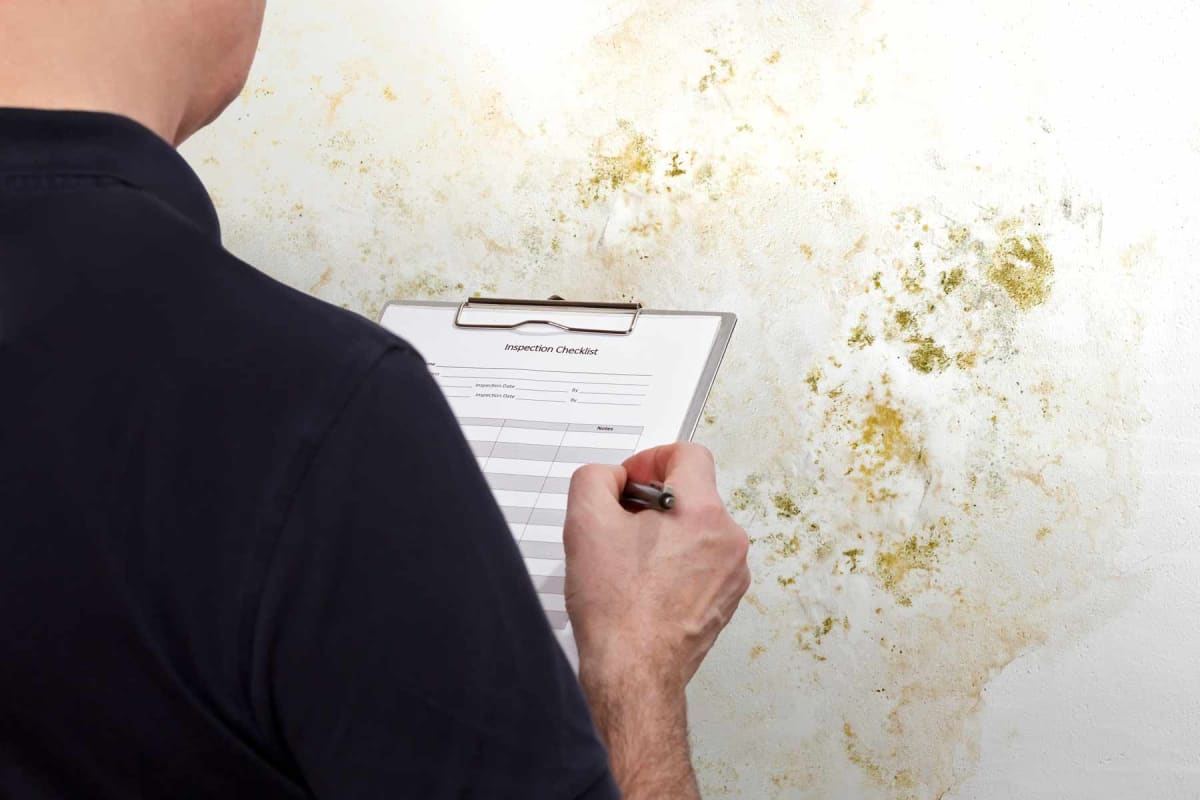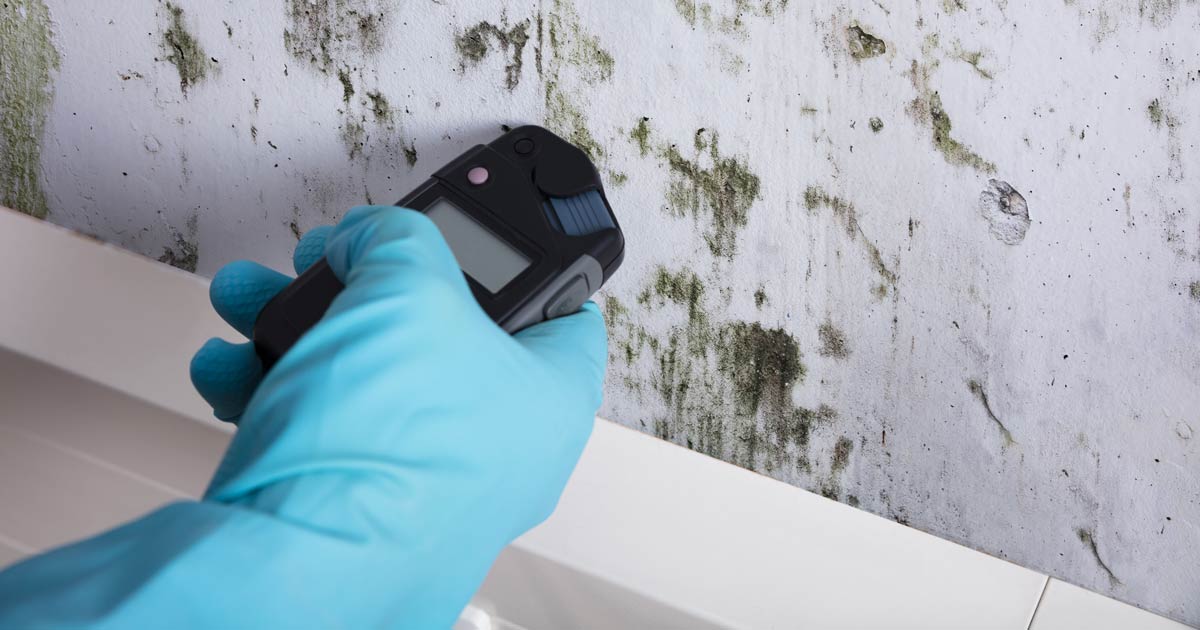Specialist Tips for Article Mold Remediation Success
In the world of mold and mildew remediation, efficiently getting rid of mold and mildew is only half the battle; the true obstacle depends on preventing its reappearance. Post-remediation efforts play a vital function in guaranteeing a mold-free environment in the long-term. By adhering to expert ideas and ideal methods, people can secure their areas versus mold resurgence and maintain a healthy and balanced indoor setting. It remains in this phase of the removal procedure that interest to information and aggressive actions really make a distinction.
Monitor Moisture Degrees Frequently
After finishing mold removal procedures, preserving optimal humidity degrees is essential to prevent mold re-growth and make sure a healthy and balanced interior environment. High moisture levels above 60% create a helpful setting for mold to flourish, making normal monitoring an aggressive action to prevent any future mold issues.
Making use of hygrometers or wetness meters can aid in accurately determining moisture degrees in various areas of the building. These devices provide real-time data that allows removal professionals to make enlightened choices concerning air flow, dehumidification, and various other necessary activities to maintain suitable moisture degrees post-remediation. Furthermore, developing a routine timetable for moisture checks, especially in high-risk areas such as cellars, cooking areas, and washrooms, is a positive method to mold prevention. By regularly monitoring humidity levels, homeowner can effectively reduce the risk of mold reoccurrence and keep a healthy and balanced interior atmosphere post-remediation.
Conduct Thorough Inspections Post-Remediation
Adhering to the completion of mold and mildew removal procedures, it is critical to perform thorough inspections to verify the effectiveness of the removal procedure. These post-remediation evaluations are important in making certain that the mold and mildew issue has been effectively resolved which there is no reappearance or continuing to be mold development. Examinations need to be carried out by qualified professionals that have know-how in recognizing mold and mildew and analyzing indoor air quality.
Throughout these assessments, different techniques such as aesthetic evaluations, air sampling, and surface tasting may be employed to completely assess the remediated areas. Aesthetic assessments involve a comprehensive examination of the premises to check for any kind of noticeable indications of mold and mildew development or water damages. Air sampling aids in figuring out the air-borne mold and mildew spore degrees, while surface sampling can spot mold and mildew bits on surface areas.
Implement Correct Air Flow Approaches
After guaranteeing the effectiveness of the mold and mildew removal procedure via comprehensive evaluations, the following essential action is to concentrate on applying proper air flow methods. Appropriate ventilation is essential in stopping mold and mildew reoccurrence by controlling dampness degrees and promoting air circulation. To accomplish this, it is advised to make use of exhaust fans in locations prone to high humidity, such as kitchen areas and washrooms. Furthermore, opening up doors and windows when weather condition allows can aid boost air movement and minimize dampness build-up. Air purifiers and dehumidifiers are also valuable tools in maintaining optimal indoor air high quality.
Proper air flow not only help in protecting against mold development but additionally contributes to the general wellness and convenience of owners. By guaranteeing appropriate ventilation throughout the home, you can minimize the risk of mold and mildew regrowth and create a much healthier living atmosphere.

Usage Mold-Resistant Products for Services
To enhance the lasting performance of mold and mildew removal initiatives, including mold-resistant materials for repair services is important in alleviating the threat of future mold and mildew growth. Mold-resistant materials are mold removal license developed to stand up to wetness and inhibit mold growth, making them an important option for locations prone to moisture and moisture. When repairing locations impacted by mold and mildew, using products such as mold-resistant drywall, mold-resistant paints, and mold-resistant caulking can aid avoid mold and mildew reappearance.
Mold-resistant drywall is an exceptional alternative to typical drywall in areas like basements and washrooms where moisture levels are higher. When revealed to damp conditions, this kind of drywall has an unique finishing that stands up to mold growth also. Additionally, using mold-resistant paints consisting of antimicrobial agents can better hinder mold advancement on ceilings and wall surfaces.
In areas where wetness prevails, such as bathroom and kitchens, making use of mold-resistant caulking around home windows, tubs, and sinks can help seal out water and prevent mold and mildew from holding in splits and gaps. By buying these mold-resistant products throughout fixings post-remediation, you can substantially lower the chance of future mold and mildew problems and maintain a much healthier indoor atmosphere.
Maintain Tidiness and Address Water Issues
Making sure sanitation and promptly addressing water problems are fundamental practices to maintain in protecting interior areas from mold reinfestation. After mold removal, it is vital to preserve a tidy atmosphere to avoid the regrowth of mold and mildew (Post remediation mold testing near me). Normal cleaning, cleaning, and vacuuming can assist eliminate any kind of lingering mold spores and prevent them from settling and proliferating. Additionally, maintaining indoor rooms completely dry and resolving any kind of water problems without delay is necessary in mold avoidance. Leakages, water breach, or high humidity degrees can develop the excellent reproduction ground for mold, so it is crucial to take care of any type of water-related issues instantly.
To preserve sanitation, take into consideration utilizing HEPA filters in vacuum cleaners and air cleansers to trap mold spores and avoid their flow in the air. Making sure correct air flow in locations vulnerable to moisture build-up, such as restrooms and kitchen areas, can aid keep moisture degrees in check. By staying attentive about cleanliness and addressing water problems quickly, you can efficiently stop mold and mildew reinfestation and maintain a healthy indoor atmosphere.
Verdict

In the world of mold and mildew remediation, successfully removing mold is just half the battle; the true difficulty exists in avoiding its reappearance. After completing mold removal procedures, maintaining ideal humidity degrees is essential to prevent mold and mildew re-growth and make sure a healthy interior setting. High humidity degrees above 60% create a helpful setting for mold to grow, making regular checking a positive procedure to stop any future mold and mildew concerns.
To boost the lasting effectiveness of mold remediation initiatives, incorporating mold-resistant materials for repairs is critical in mitigating the danger of future mold and mildew growth. After mold and mildew removal, it is vital to maintain a clean environment to protect against the regrowth of mold and mildew.